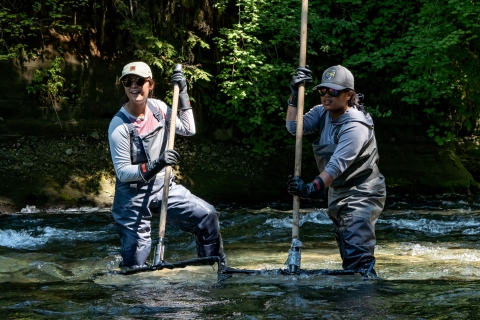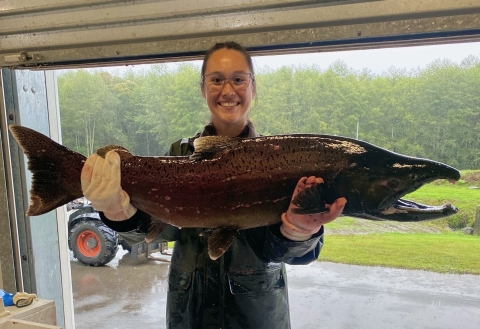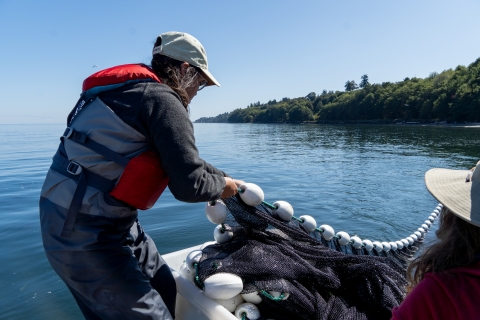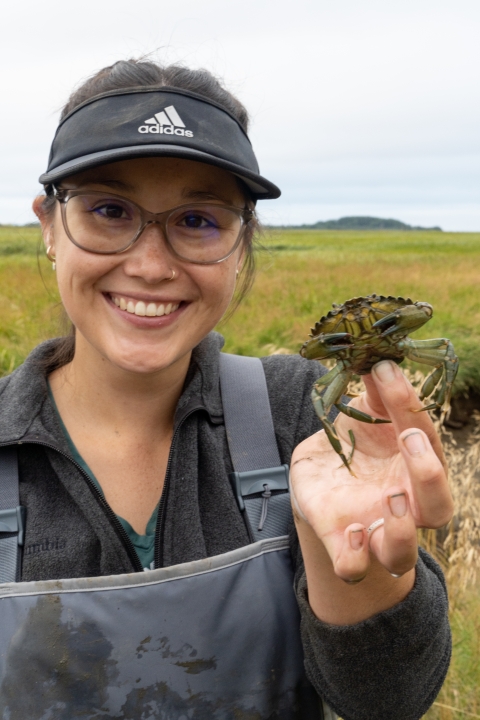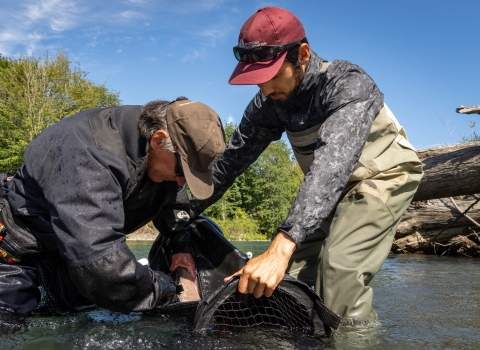I wiped the sweat from my brows and squinted, looking ahead, as the October sun beamed down. The past two hours I have been helping carry logs along this creek located on a private family’s 20,000 acre ranch. This family had voluntarily chosen to protect their land for future generations by entering a conservation easement conservation easement
A conservation easement is a voluntary legal agreement between a landowner and a government agency or qualified conservation organization that restricts the type and amount of development that may take place on a property in the future. Conservation easements aim to protect habitat for birds, fish and other wildlife by limiting residential, industrial or commercial development. Contracts may prohibit alteration of the natural topography, conversion of native grassland to cropland, drainage of wetland and establishment of game farms. Easement land remains in private ownership.
Learn more about conservation easement that permanently and legally protects its conservation values by limiting land use. I'm tired, my feet and hands hurt, and this log across my right shoulder is pulling me to the ground. My classmate and I dropped the log, and I turned around to take in the views. The bushes rustled as I stood still, taken by the endless valleys and plateaus of wilderness surrounding me. My mind went silent, and my soul became calm as the breeze whispered in my ears and wrapped my body with a cool blanket. The intrinsic value and beauty of our natural world echoed across the plains.
Yá’át’ééh, hello. My name is Maya and I am a Navajo Tribal member. This was an extra-credit assignment for my Environmental Conservation 101 elective, my freshman year of college. We were volunteering to help move these tree logs to various locations along this creek that was known for flooding and washing out, and the logs were going to be used to create log dams to adjust the flow. This was the moment I knew that working in the field of natural resources and making a positive influential impact on conservation and the health of ecosystems was my calling.
I had so much fun with this volunteer experience and a couple others with this class that I changed my degree from engineering to natural resource management. Following my graduation, I interned with the Colorado State Forest Service helping with timber sale layout preparation. I had a wonderful experience that reconfirmed my choice to change majors, and I was excited to learn what other jobs and experiences there were outside of forestry. Then I landed an amazing opportunity to intern with the Western Washington Fish and Wildlife Conservation Office in Lacey, Washington working as a fisheries field technician through the Bureau of Indian Affairs WaterCorps program.
“Whenever you’re ready!” shouted Greg. I took a shaky breath and gave a weary smile. I pulled my snorkel mask over my eyes and nose and clumsily made my way over the rocky riverbed to the deeper end. With all the snorkeling gear I had on, dry suit, boots, gloves, hood, and mask, I was surprised I hadn’t taken an involuntary splash in the water yet. “Okay, I’m ready!” I exclaimed. The river rushing past me was muffled beneath my hood as I knelt down. I took one more breath and bent down into the water and let the current take me downstream. I blinked once, and then twice as my eyes adjusted. The way the world quieted eased the anxiety I had going into this. Looking around, I felt like I was in another world. A wave of peace and calmness settled into my mind as I watched the reddened maple leaves silently drift along the riverbed. Hundreds of juvenile coho salmon waded in the current moving around me. I continued downstream as I took in my surroundings. I looked at my hands and watched the tiny salmon interact with curiosity of what this giant thing is floating down the river. An alien? A log? Perhaps a giant otter? Nope, just me. Both of us just as curious as the other. Initially the idea of snorkeling kind of freaked me out, but now after exploring what felt like an unknown world, a couple hours of snorkeling did not feel like long enough. This opportunity is just one of many during my internship with the U.S. Fish and Wildlife Service.
During my internship I got to be a part of numerous learning experiences. I did a lot of work with invasive European green crabs and the trapping efforts at refuges. I helped net fish through electrofishing efforts to collect fish data around the Olympic Peninsula. I learned the ins and outs of fish hatchery work. I got the opportunity to work with other partner organizations and became proficient at beach seining to collect data. I helped do snorkel surveys for fish and mussels. I had a really unique opportunity helping with the salmon spawning season and biosampling (collecting data on tagged adult salmon). I became very comfortable and proficient in lab work identifying invertebrates under a microscope. Another important aspect of conservation work that I was able to support was outreach and education work. This was all new to me and fulfilling work educating a broad range of kindergarteners to adults about aquatic conservation and fishing.
I had no prior experience working with fisheries or fish outside of a few college courses and fly fishing with my dad, so I was nervous that my lack of experience would be a barrier for me to get the internship. I was fortunate enough to get the position and the entire experience has been nothing but learning and creating new skills in data collection, networking, fish identification and much more. Nearly every day was a learning opportunity and learning new skills as well as gaining a new perspective in conservation. The realm of Natural Resources is so vast and exciting. This internship has encouraged me to try more things and to push myself to go outside of my comfort zone. This experience has impacted my education and future career by giving me a new perspective on all the hard work that goes into fisheries and fish conservation. It also showed me firsthand how the federal government works alongside Tribal governments in the Pacific Northwest.
In my long-term career goals I’m not entirely sure what I want to do, but I have this new spark of interest in aquatic species. I know I want to go back to get my master’s with a research-based thesis. Gaining insight into the different realms of natural resources and working firsthand in varying fields such as my time spent with the Service further solidified my passion for science and the importance of research. Field work and data collection helps pave the way for management plans and decisions. With a natural resource management degree I have a love for our natural world, and I want to help conserve and protect our lands and waters and the species living within them.
Editor note: The Tribal WaterCorps program is sponsored by the Bureau of Indian Affairs in partnership with Conservation Legacy. The Washington Fish and Wildlife Conservation Office is one of several WaterCorps host sites throughout the country.





